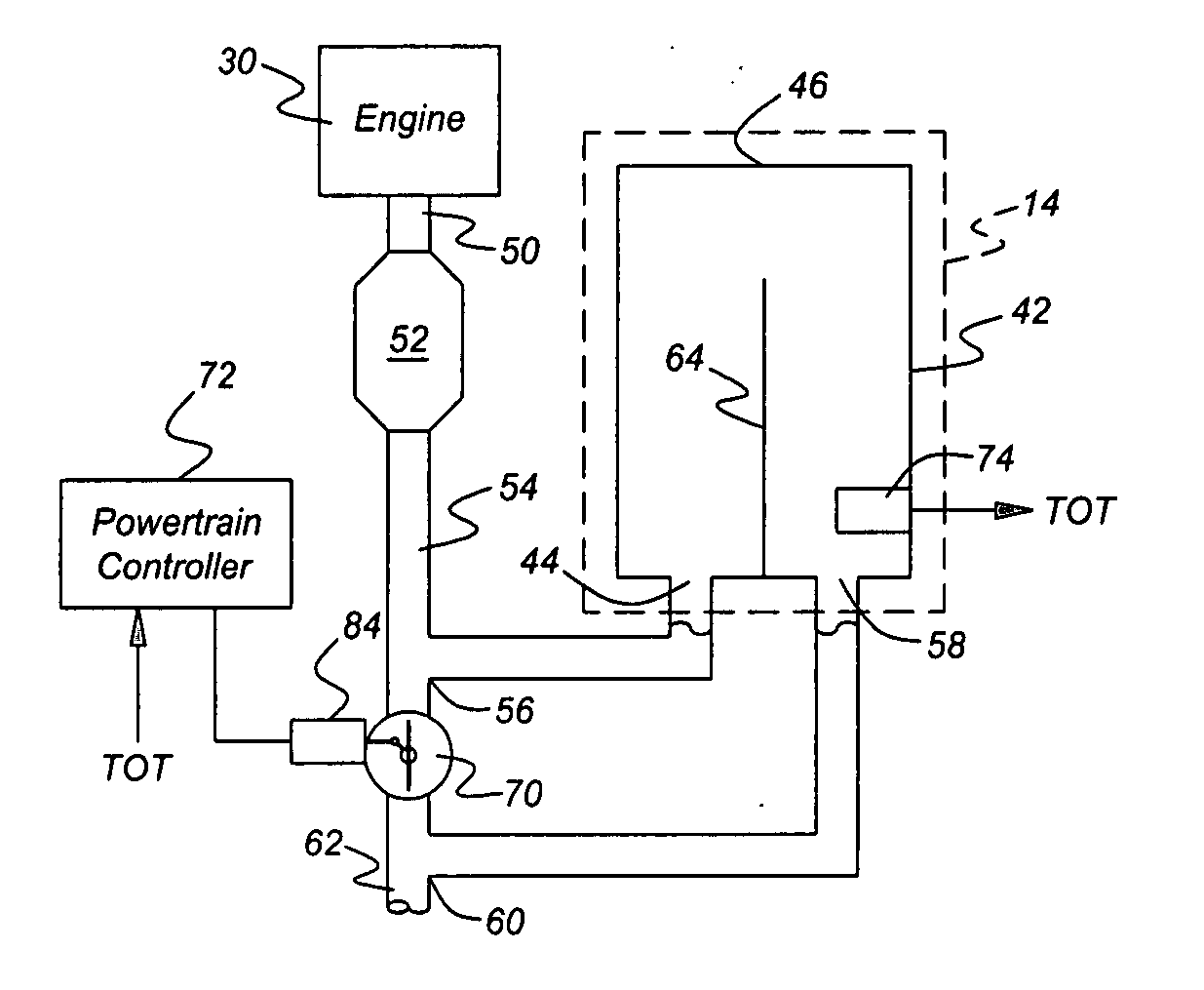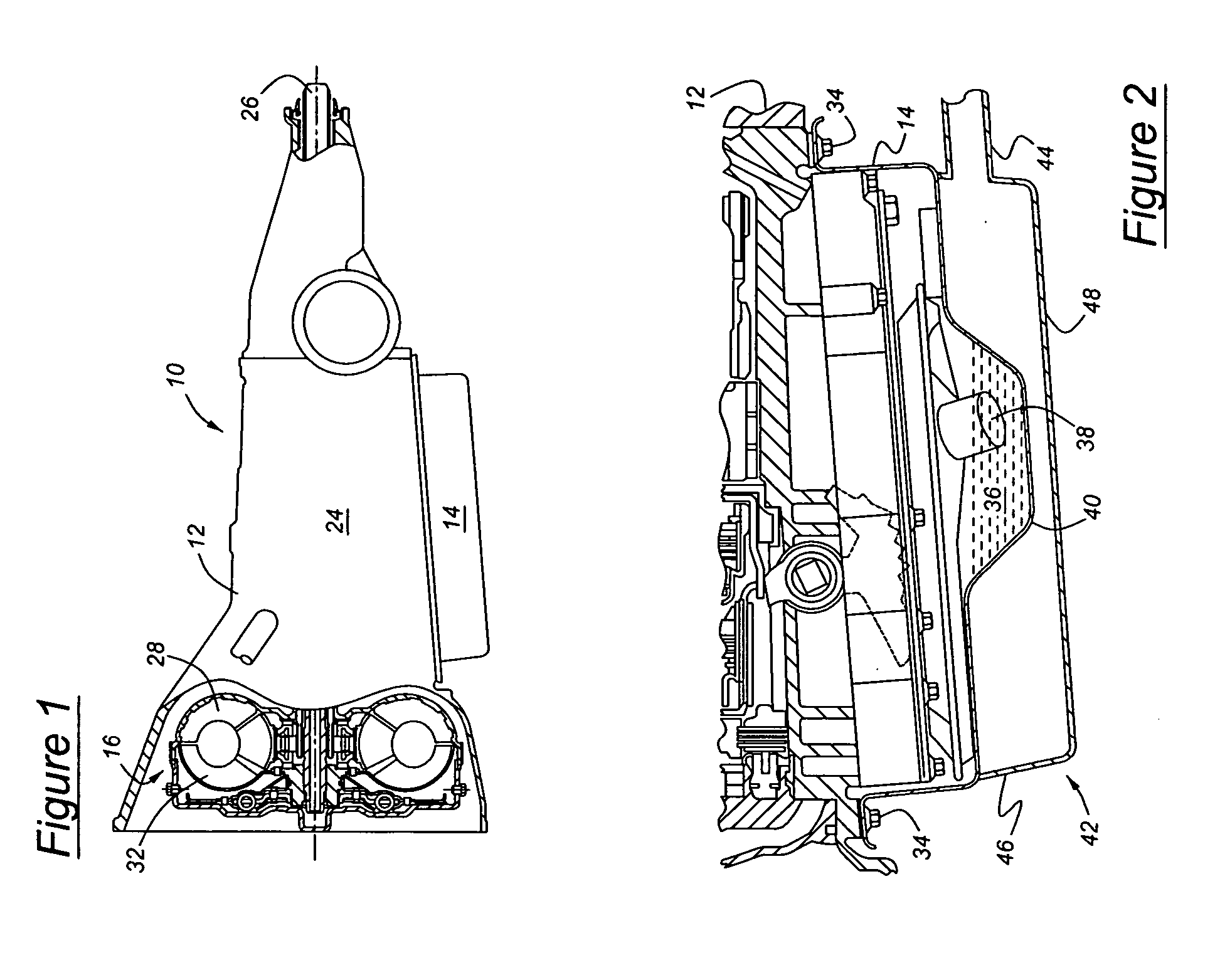Transmission fluid heating using engine exhaust
a technology of transmission fluid and engine exhaust, which is applied in the direction of machines/engines, lighting and heating apparatus, machine operation mode, etc., can solve the problems of potential problems and noticeable delay for vehicle occupants, and achieve the effects of reducing frictional losses, fuel economy benefits, and improving fuel economy
- Summary
- Abstract
- Description
- Claims
- Application Information
AI Technical Summary
Benefits of technology
Problems solved by technology
Method used
Image
Examples
Embodiment Construction
[0017] Referring now to the drawings, there is illustrated in FIG. 1 an automatic transmission 10 packaged in a case 12, and a transmission fluid reservoir or oil pan 14 located below and secured to the case. Located within the case 12, are the transmission components and subsystems including a hydrokinetic torque converter 16, gearing 24 and an output shaft 26. Transmission fluid, sometimes called “oil,” circulates within the transmission in a hydraulic system under pressure produced by a hydraulic pump; flows from the case to an external oil cooler, which extracts heat from the fluid; and returns to the oil pan 14 from the cooler. Heat from the transmission fluid is exchanged in the cooler principally by convection to air passing at high speed between fins radiating from the lines that carry the fluid through the cooler and by conduction to surrounding fluid.
[0018] The torque converter 16 includes a bladed impeller wheel 28 driven by an engine 30 (see FIGS. 3A and 3B). A bladed t...
PUM
 Login to View More
Login to View More Abstract
Description
Claims
Application Information
 Login to View More
Login to View More - R&D
- Intellectual Property
- Life Sciences
- Materials
- Tech Scout
- Unparalleled Data Quality
- Higher Quality Content
- 60% Fewer Hallucinations
Browse by: Latest US Patents, China's latest patents, Technical Efficacy Thesaurus, Application Domain, Technology Topic, Popular Technical Reports.
© 2025 PatSnap. All rights reserved.Legal|Privacy policy|Modern Slavery Act Transparency Statement|Sitemap|About US| Contact US: help@patsnap.com



